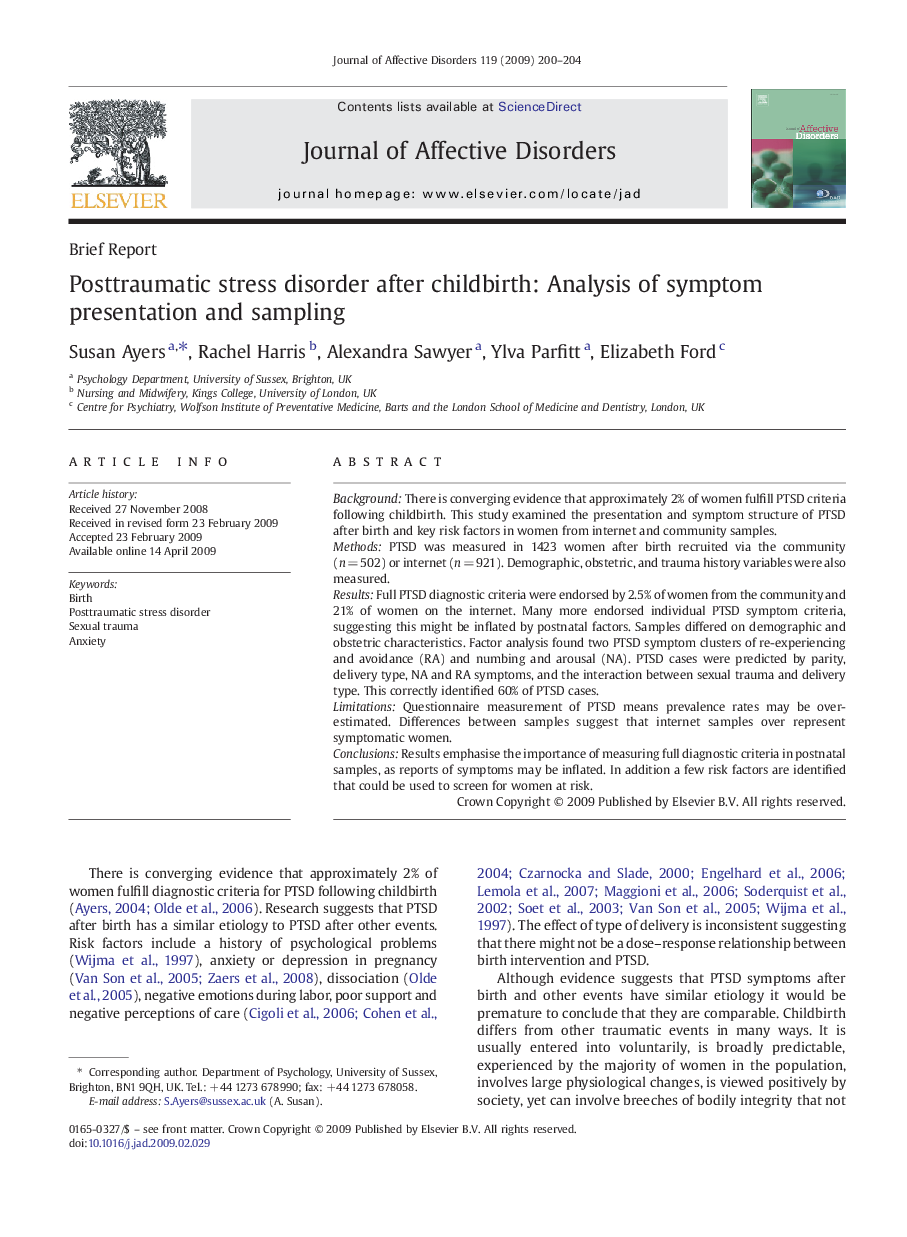| Article ID | Journal | Published Year | Pages | File Type |
|---|---|---|---|---|
| 6236608 | Journal of Affective Disorders | 2009 | 5 Pages |
BackgroundThere is converging evidence that approximately 2% of women fulfill PTSD criteria following childbirth. This study examined the presentation and symptom structure of PTSD after birth and key risk factors in women from internet and community samples.MethodsPTSD was measured in 1423 women after birth recruited via the community (n = 502) or internet (n = 921). Demographic, obstetric, and trauma history variables were also measured.ResultsFull PTSD diagnostic criteria were endorsed by 2.5% of women from the community and 21% of women on the internet. Many more endorsed individual PTSD symptom criteria, suggesting this might be inflated by postnatal factors. Samples differed on demographic and obstetric characteristics. Factor analysis found two PTSD symptom clusters of re-experiencing and avoidance (RA) and numbing and arousal (NA). PTSD cases were predicted by parity, delivery type, NA and RA symptoms, and the interaction between sexual trauma and delivery type. This correctly identified 60% of PTSD cases.LimitationsQuestionnaire measurement of PTSD means prevalence rates may be over-estimated. Differences between samples suggest that internet samples over represent symptomatic women.ConclusionsResults emphasise the importance of measuring full diagnostic criteria in postnatal samples, as reports of symptoms may be inflated. In addition a few risk factors are identified that could be used to screen for women at risk.
